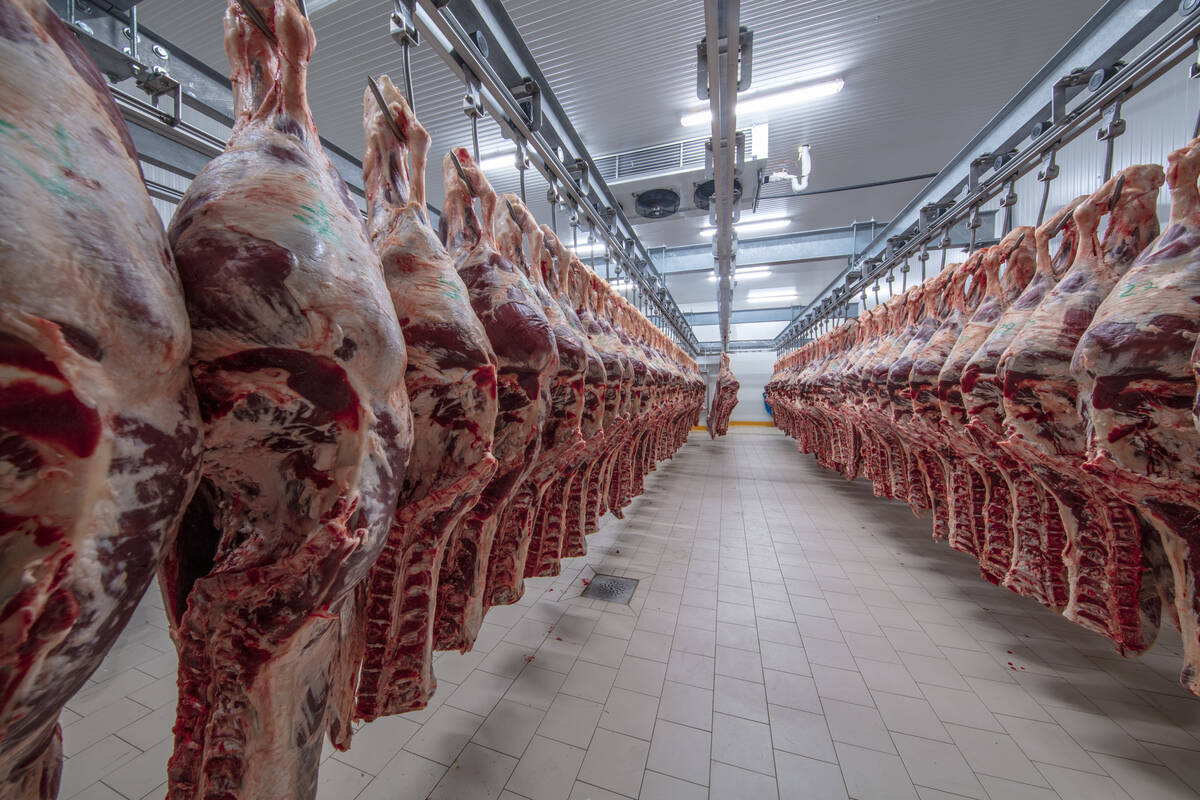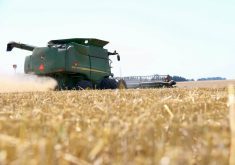Spot live cattle futures closed higher on Monday amid strong cash markets to rise six per cent for the year and chalk up the fourth straight annual gain in prices at a time when the U.S. herd is the smallest in six decades.
Chicago Mercantile Exchange spot live cattle futures also posted their biggest percentage gain for the quarter, over six per cent, since Sept. 30, 2011.
Fewer cattle are coming to market now after last summer’s worst drought in half a century rallied corn prices to a record high, forcing ranchers to cull their herd.
Read Also

U.S. livestock: Cattle make small gains, hogs fall
Chicago cattle futures made modest gains on Monday while hogs pulled back. Most-active February live cattle closed at 230.550 cents…
"It’s been a good year for the livestock and meat sectors with cash prices being higher, but that was accompanied by the spike in grain prices from drought," said independent livestock futures trader Dan Norcini.
The CME live cattle spot December trading month expired from trading at noon today CST. It settled up 0.5 cent per pound, or 0.39 per cent higher, at 129.9 cents (all figures US$).
Remaining CME live cattle months finished lower, weakened by investor worries about their premiums compared with recent cash cattle values.
February live cattle, the new lead month, closed 1.275 cents/lb. lower, or down 0.95 per cent, at 132.3 cents. April ended at 136.375 cents, down 0.85 cent or 0.62 per cent lower.
The final hours of trading for 2012 found investors waiting for word out of Washington as the deadline for automatic tax increases and spending cuts approaches.
"We pretty much know what cash is going to do. It’s the uncertainty in our nation’s capital that still has money sitting on the sidelines," a trader said.
Live cattle traders expect cash cattle to trade steady to higher than last week’s $127 per hundredweight sales. Packers are buying cattle for the first full slaughter week after the year-end holidays.
Investors are encouraged by higher wholesale beef prices as grocers prepare to feature beef in January for consumers who have grown weary of eating ham and turkey over the holidays.
The price for wholesale choice beef Monday morning was $194.17/cwt, up 70 cents from Friday, and select cuts rose 95 cents to $181.24, USDA said.
And, colder temperatures blanketing the western and central U.S. Plains will likely slow the growth rate in animals, making them less available to packers.
"With the cold and wet conditions across the cattle feeding area, feedlot performance is expected to reflect a more normal winter situation with carcass weights beginning a normal seasonal downtrend," said David Hales, president of Hales Trading Co.
Feeder cattle at the CME followed lower deferred live cattle contracts.
Still, futures ended up roughly 3.5 per cent for the year while notching gains for a fourth consecutive year.
January closed 0.625 cent/lb. lower, or down 0.41 per cent, at 151.4 cents. March was off 0.45 cent, or down 0.29 per cent, at 154.275 cents.
Hogs drop on report, up for year
CME hogs fell on Monday in response to last Friday’s bearish U.S. Department of Agriculture quarterly hog report, analysts and traders said.
USDA’s data showed the U.S. hog herd nearly steady with year-ago levels, bucking analysts’ estimates for a modest reduction.
Morning losses allowed the February contract to sink below the 40- and 20-day moving averages of 85.97 and 85.69 cents, prompting fund liquidation.
Nonetheless, CME hogs futures rose almost two per cent for the year, stretching their yearly winning streak to five.
They were also up more than 11 per cent for the quarter after cash prices recovered from late summer lows as producers culled their herds at a record pace to avoid painfully high feed costs.
February hogs settled 0.65 cent/lb. lower, or down 0.75 per cent, at 85.725 cents. April ended at 88.725 cents, 1.4 cents lower or down 1.55 per cent.
Traders will monitor cash hog prices that recently slipped as packing plants closed for New Year’s. And packers may be reluctant to hike cash bids as their margins sink deeper in the red.
But, some processors may raise cash hog bids soon to accommodate what is expected to be a big Saturday slaughter. Also, frigid temperatures could result in fewer hogs for packers as the cold weather slows animal weight gains.
Still, some investors are expecting processors to lower cash bids to offset negative margins.
USDA data Monday morning showed the average hog price in the eastern Midwest market at $80.13/cwt, down 38 cents from Friday. Prices in other hog growing regions were not available.
The average pork packer margin for Monday was a negative $6 per head, compared with a negative $5.70 on Friday and a positive 75 cents on Dec. 24, according to HedgersEdge.com.
— Theopolis Waters writes for Reuters from Chicago.














